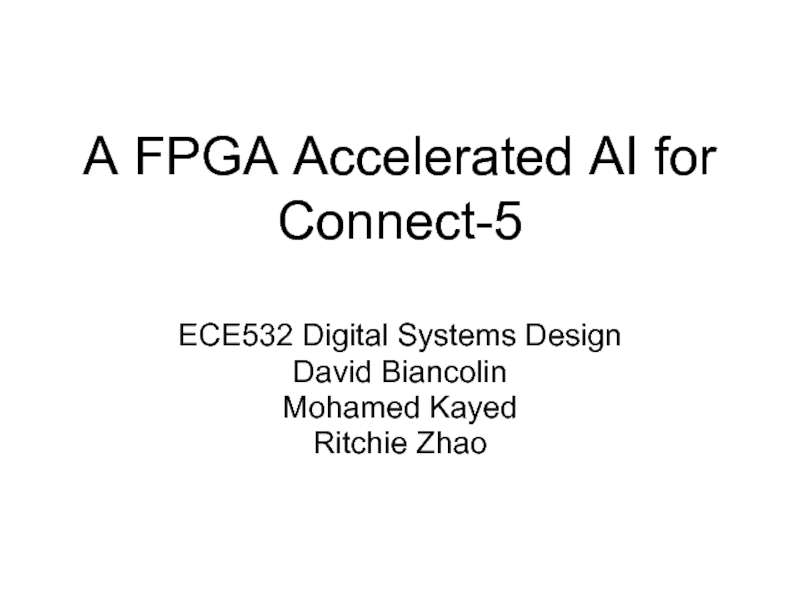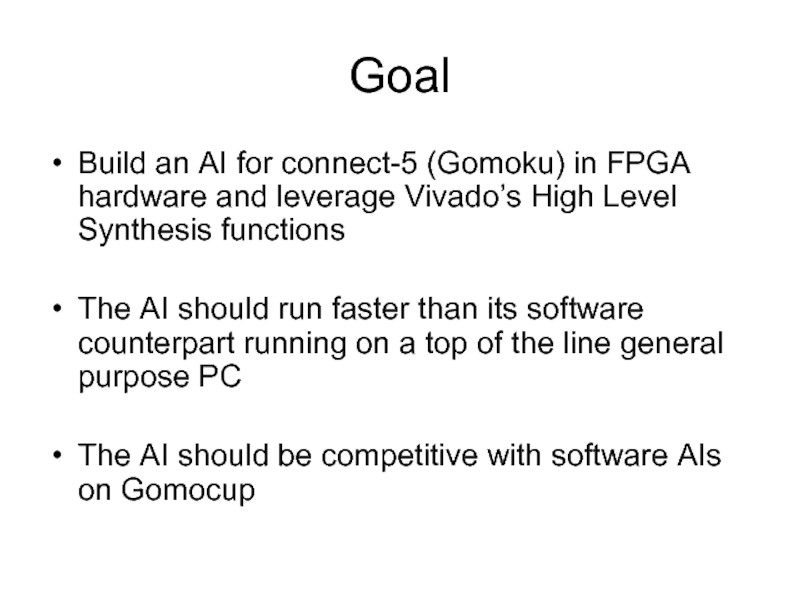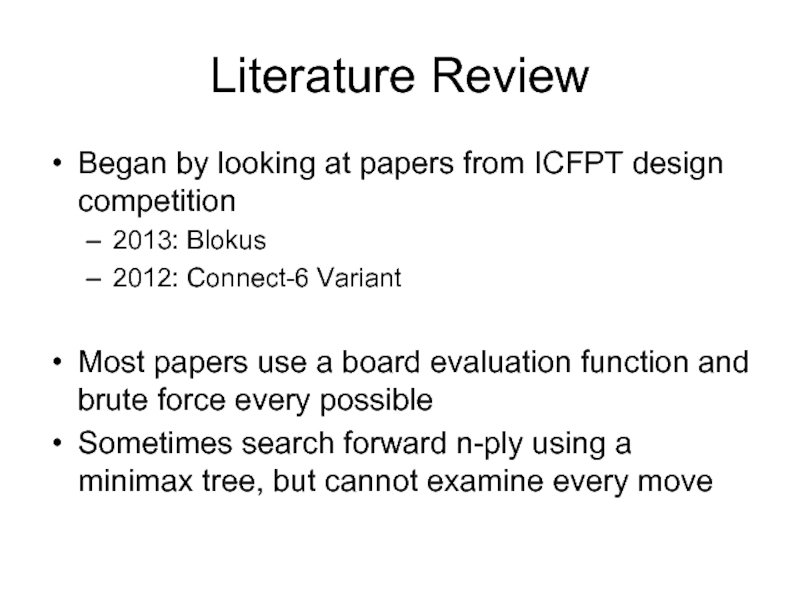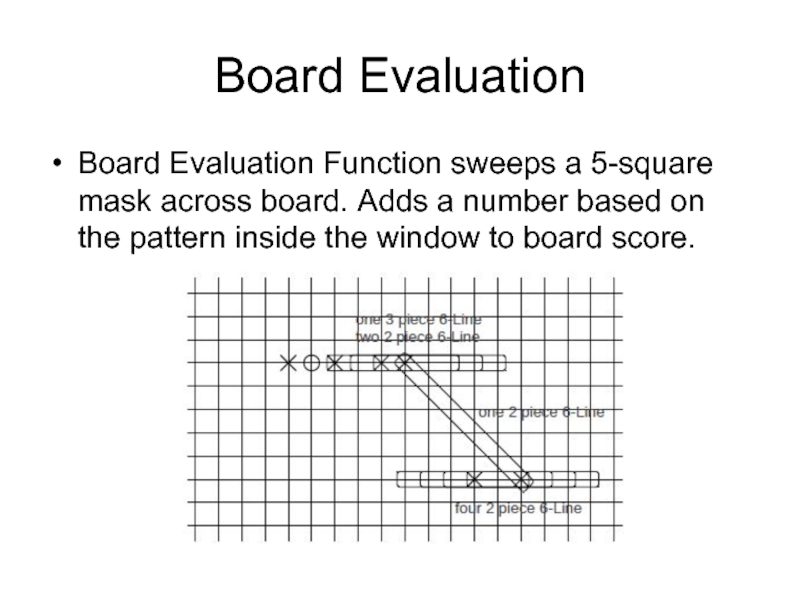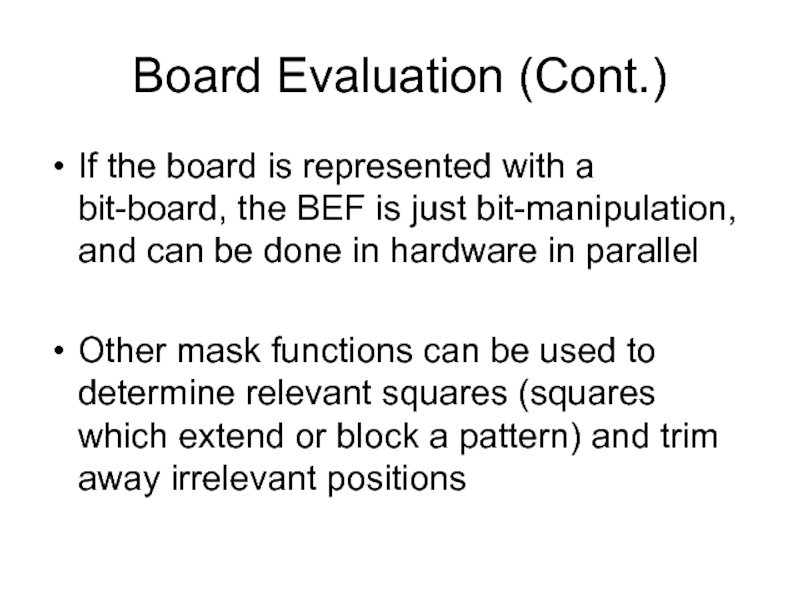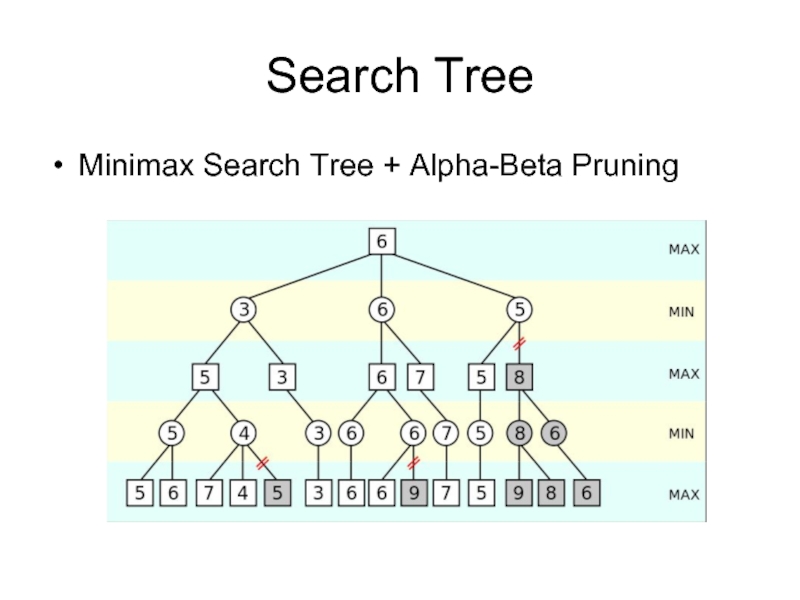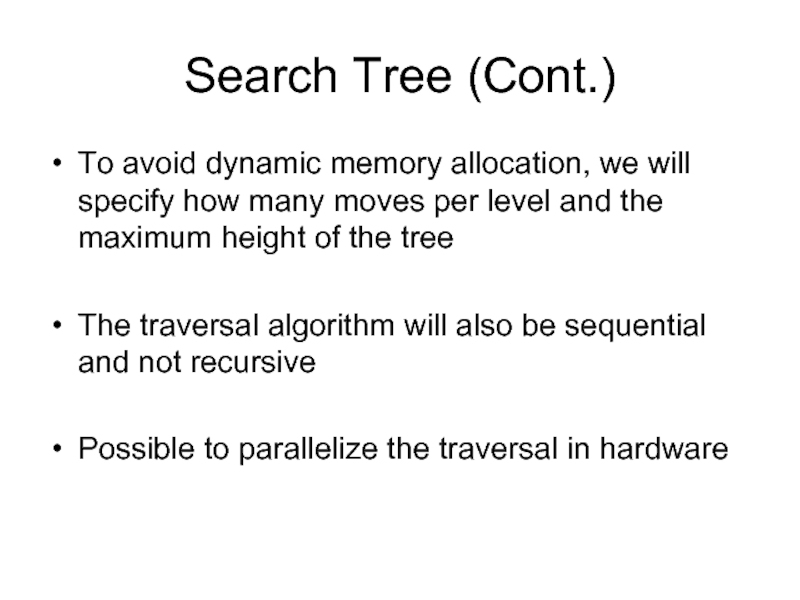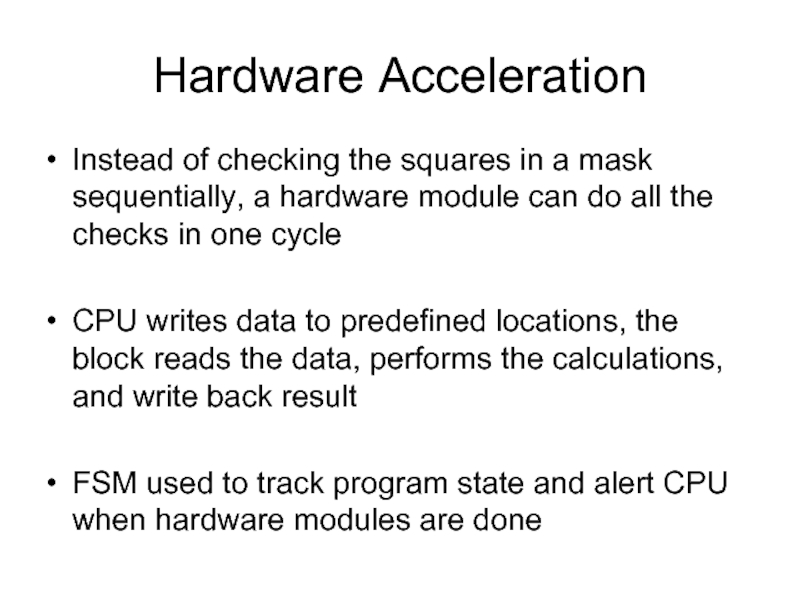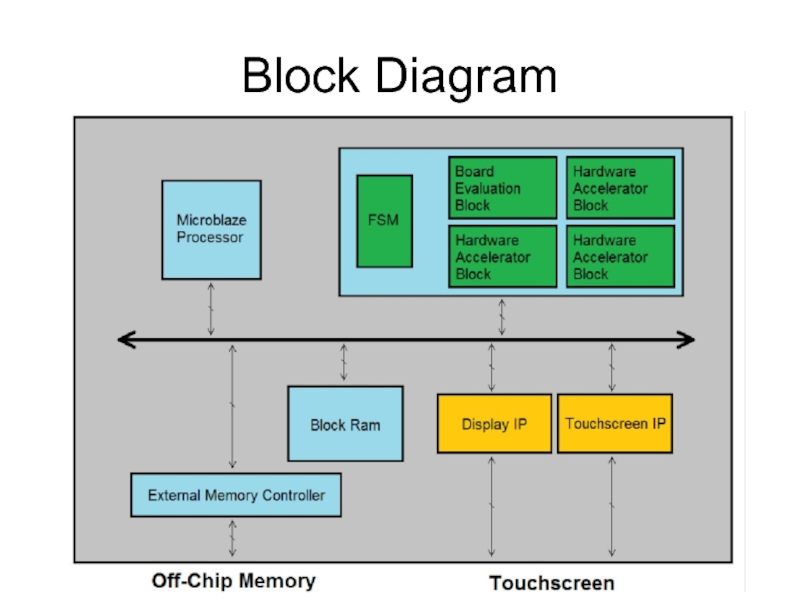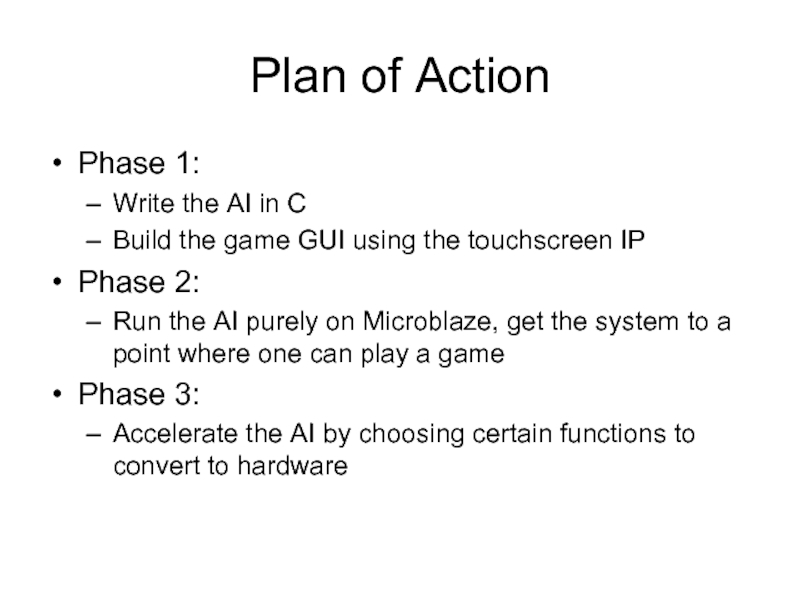Zhao
- Главная
- Разное
- Дизайн
- Бизнес и предпринимательство
- Аналитика
- Образование
- Развлечения
- Красота и здоровье
- Финансы
- Государство
- Путешествия
- Спорт
- Недвижимость
- Армия
- Графика
- Культурология
- Еда и кулинария
- Лингвистика
- Английский язык
- Астрономия
- Алгебра
- Биология
- География
- Детские презентации
- Информатика
- История
- Литература
- Маркетинг
- Математика
- Медицина
- Менеджмент
- Музыка
- МХК
- Немецкий язык
- ОБЖ
- Обществознание
- Окружающий мир
- Педагогика
- Русский язык
- Технология
- Физика
- Философия
- Химия
- Шаблоны, картинки для презентаций
- Экология
- Экономика
- Юриспруденция
A FPGA Accelerated AI for Connect-5 презентация
Содержание
- 1. A FPGA Accelerated AI for Connect-5
- 2. Goal Build an AI for connect-5 (Gomoku)
- 3. Literature Review Began by looking at papers
- 4. Board Evaluation Board Evaluation Function sweeps a
- 5. Board Evaluation (Cont.) If the board is
- 6. Search Tree Minimax Search Tree + Alpha-Beta Pruning
- 7. Search Tree (Cont.) To avoid dynamic memory
- 8. Hardware Acceleration Instead of checking the squares
- 9. Block Diagram
- 10. Plan of Action Phase 1: Write the
Слайд 1A FPGA Accelerated AI for Connect-5
ECE532 Digital Systems Design
David Biancolin
Mohamed Kayed
Ritchie
Слайд 2Goal
Build an AI for connect-5 (Gomoku) in FPGA hardware and leverage
Vivado’s High Level Synthesis functions
The AI should run faster than its software counterpart running on a top of the line general purpose PC
The AI should be competitive with software AIs on Gomocup
The AI should run faster than its software counterpart running on a top of the line general purpose PC
The AI should be competitive with software AIs on Gomocup
Слайд 3Literature Review
Began by looking at papers from ICFPT design competition
2013: Blokus
2012:
Connect-6 Variant
Most papers use a board evaluation function and brute force every possible
Sometimes search forward n-ply using a minimax tree, but cannot examine every move
Most papers use a board evaluation function and brute force every possible
Sometimes search forward n-ply using a minimax tree, but cannot examine every move
Слайд 4Board Evaluation
Board Evaluation Function sweeps a 5-square mask across board. Adds
a number based on the pattern inside the window to board score.
Слайд 5Board Evaluation (Cont.)
If the board is represented with a bit-board, the
BEF is just bit-manipulation, and can be done in hardware in parallel
Other mask functions can be used to determine relevant squares (squares which extend or block a pattern) and trim away irrelevant positions
Other mask functions can be used to determine relevant squares (squares which extend or block a pattern) and trim away irrelevant positions
Слайд 7Search Tree (Cont.)
To avoid dynamic memory allocation, we will specify how
many moves per level and the maximum height of the tree
The traversal algorithm will also be sequential and not recursive
Possible to parallelize the traversal in hardware
The traversal algorithm will also be sequential and not recursive
Possible to parallelize the traversal in hardware
Слайд 8Hardware Acceleration
Instead of checking the squares in a mask sequentially, a
hardware module can do all the checks in one cycle
CPU writes data to predefined locations, the block reads the data, performs the calculations, and write back result
FSM used to track program state and alert CPU when hardware modules are done
CPU writes data to predefined locations, the block reads the data, performs the calculations, and write back result
FSM used to track program state and alert CPU when hardware modules are done
Слайд 10Plan of Action
Phase 1:
Write the AI in C
Build the game GUI
using the touchscreen IP
Phase 2:
Run the AI purely on Microblaze, get the system to a point where one can play a game
Phase 3:
Accelerate the AI by choosing certain functions to convert to hardware
Phase 2:
Run the AI purely on Microblaze, get the system to a point where one can play a game
Phase 3:
Accelerate the AI by choosing certain functions to convert to hardware
